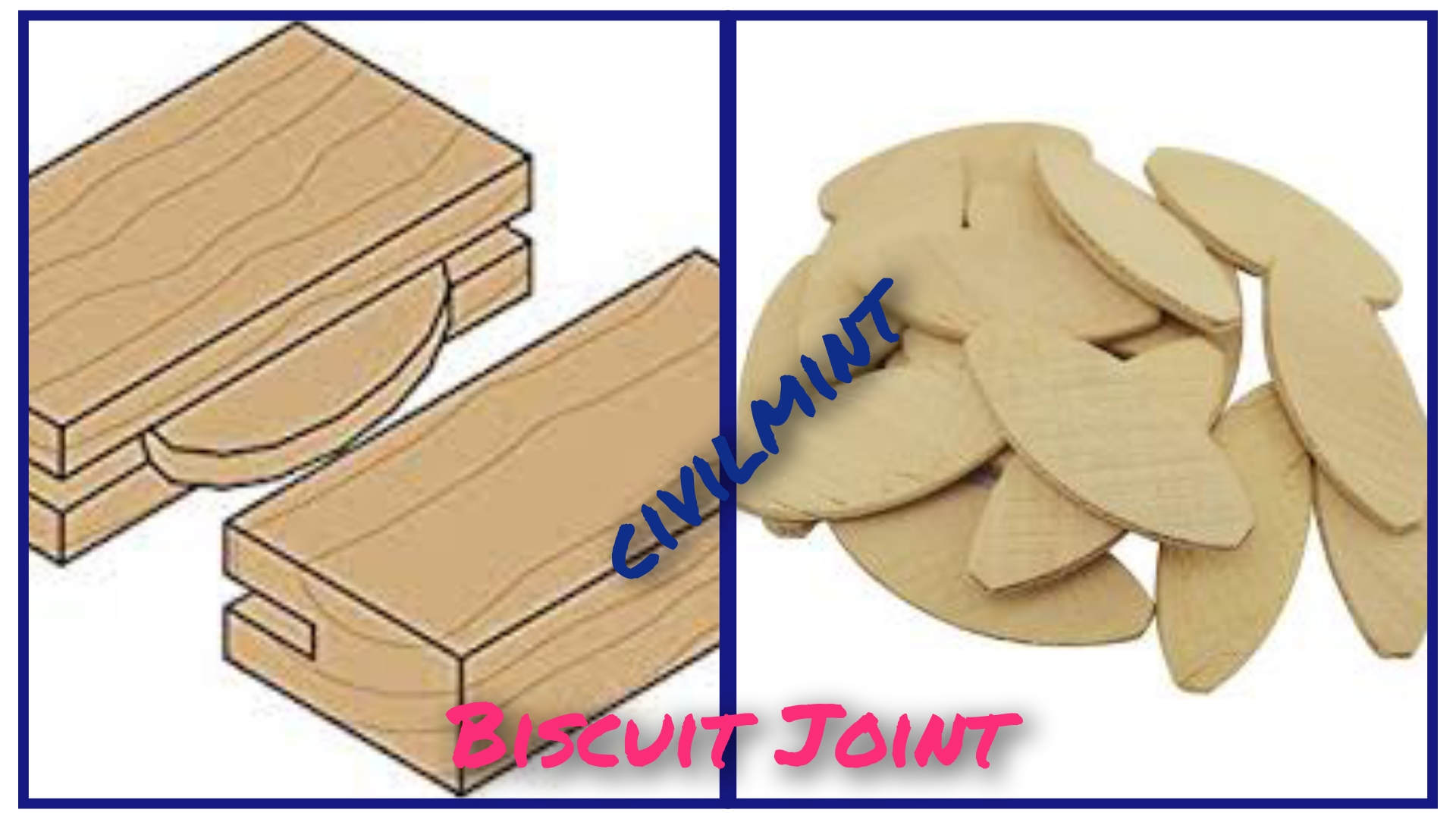This blog post explains Biscuit Joint. It is also known as Biscuit Wood Joint.

Table of Contents
What Is A Biscuit Joint?
The biscuit joint is a popular woodworking technique for joining two pieces of wood. This method involves cutting matching slots in a piece of wood and inserting an oval-shaped piece of compressed wood, called a biscuit, into the slots. The biscuit is then glued in place and swollen, forming a strong and tight joint.
To make the slot, woodworkers typically use a power tool called a biscuit joiner. This tool has a circular blade that cuts a half-moon-shaped slot in the wood. With careful alignment, the resulting joint can be virtually invisible, making biscuit joinery a popular choice for furniture makers and woodworkers.
Types Of Biscuit Joints
I have described all the popular types of biscuit joints used in wood industry.
1. Edge To Edge Joint
Joining edge grain to edge grain is one of the most common uses for a biscuit joint. This method is ideal for creating a tabletop or other large panel from multiple pieces of wood. The biscuits help align the boards during glue-up and provide lateral flexibility for a tighter fit.
2. Miter Joint
Miter joints are ideal for making window and door casings, picture frames and cabinet doors. The biscuit cutter excels at cutting the slot between two mitered pieces, providing more surface area for glue than a typical mitered joint.
3. End-to-edge Joints
Joining wood ends to solid wood does not stick well due to its fragile nature. Biscuit joinery can increase the surface area to be glued and strengthen the end-to-edge joint. This technique is especially useful for making furniture such as dressers, benches and tables.
4. Butt Joints
Butt joints can benefit from biscuit joinery because it provides more than just the end grain for the glue to adhere to. Although the joint cannot bear much weight without support, it can prevent the two butt ends from separating over time.
5. Offset Joints
Offset joints add character and depth to woodworking projects, such as insets with apron legs on a table. Biscuit joinery can also be tailored and exposed at all four corners without the need for measurements.
6. Double Biscuit Joints
For applications where more power is required, a double biscuit joint may do the trick. By cutting the slot twice and inserting two biscuits, the joint becomes stronger and allows more glue. However, biscuit joinery is best for light-duty applications such as tabletops, bookshelves and trim work. Heavy load-bearing applications are better suited for stronger joinery methods such as mortise and tenon joints.
Uses Of Biscuit Joints
Biscuit joints are a helpful way to build bookshelves and tabletops easily and consistently.
With a biscuit joiner, you can quickly create parallel shelves by marking and cutting slots in the boards.
For countertops, biscuit joints are faster than other types of joints and help align the boards to create a smooth surface with minimal sanding required.
Although not as strong as other joints, biscuit joints can save time and effort in the construction process.
